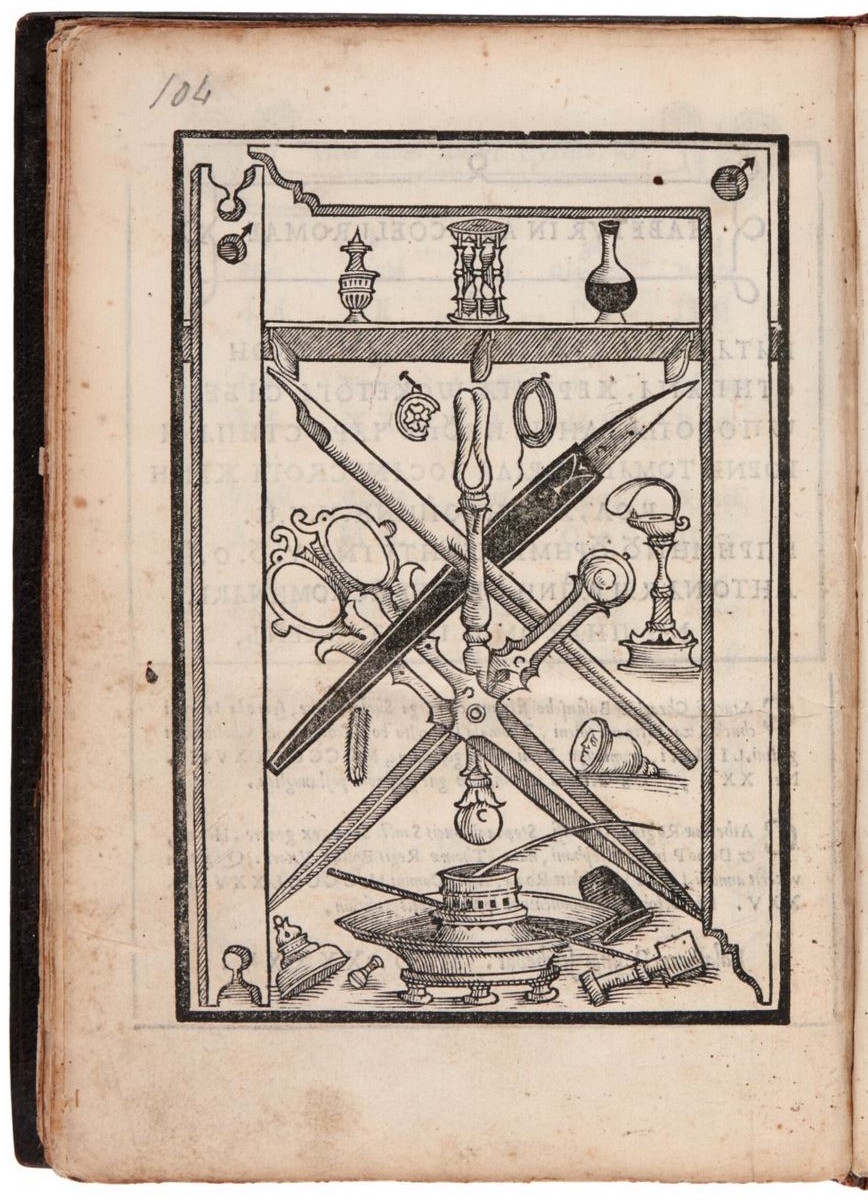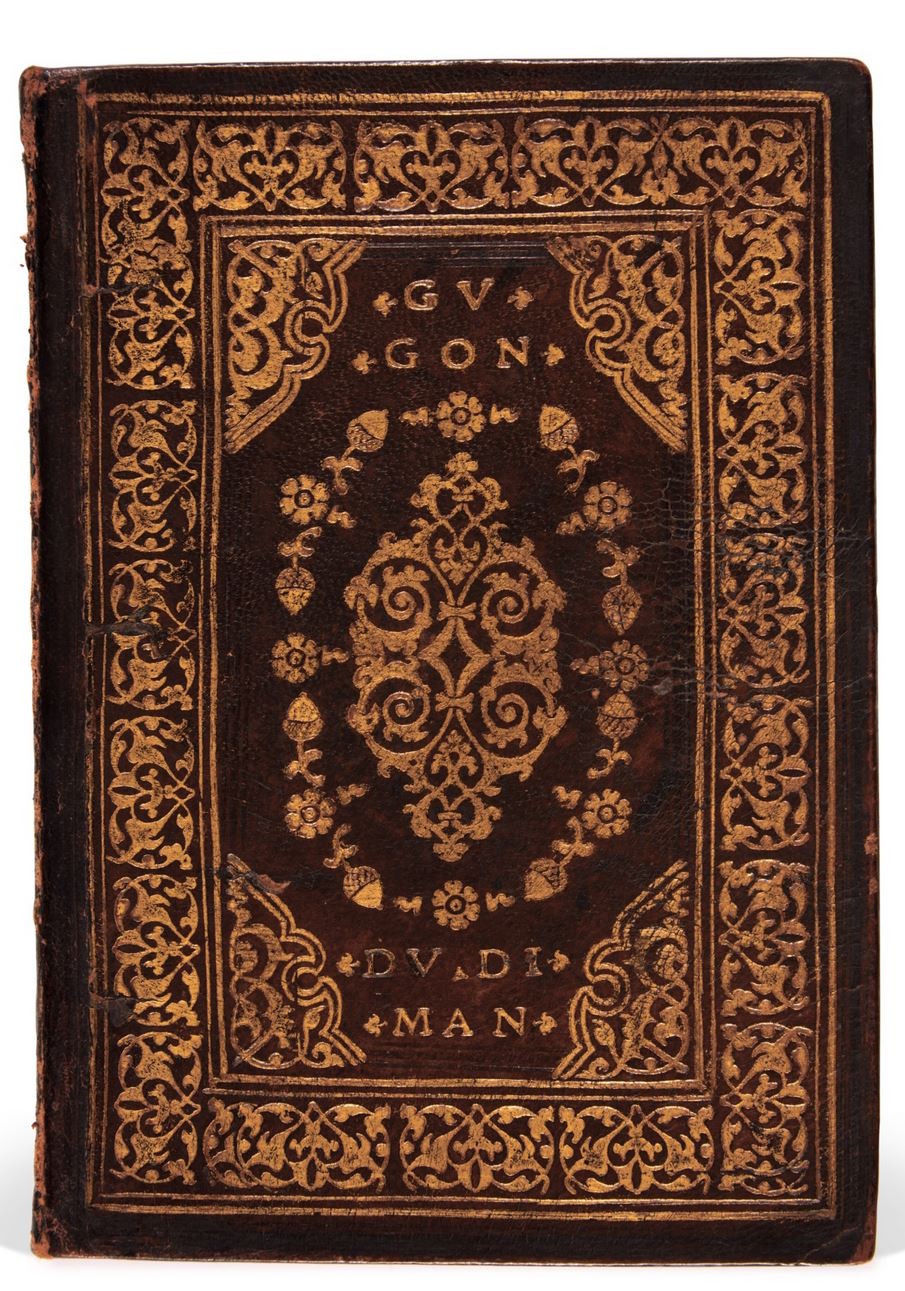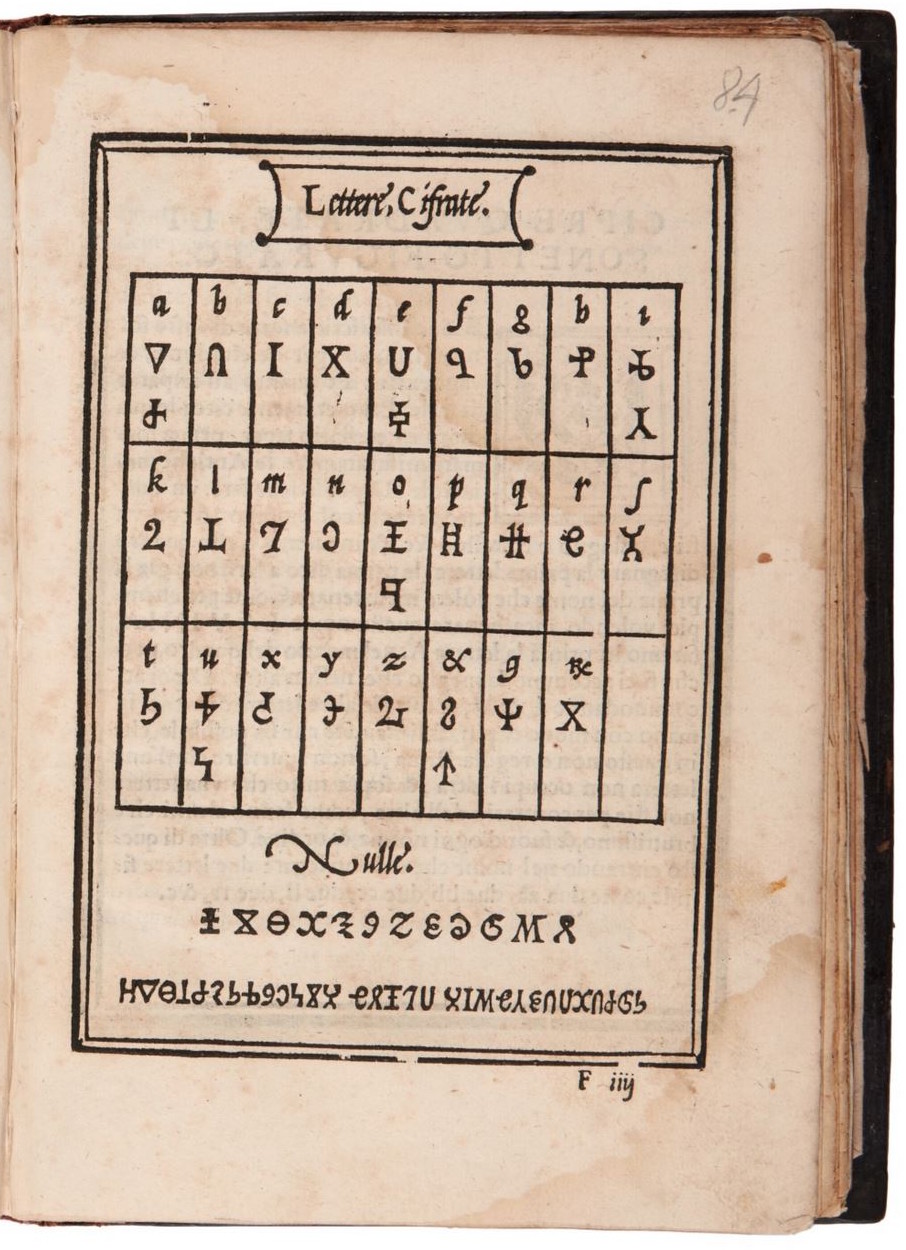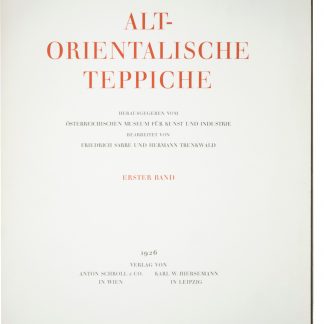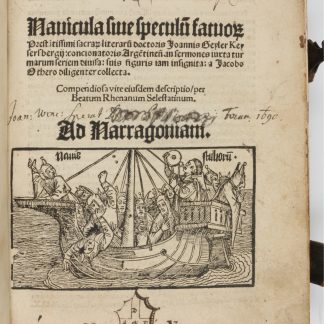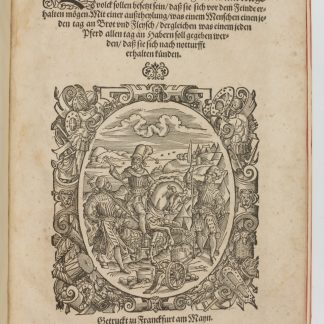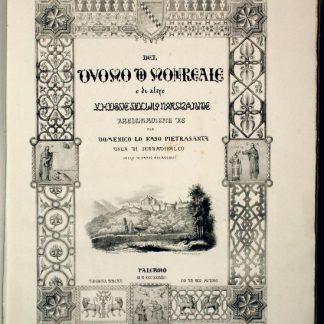Arabic script, secret codes, love rebuses: one the finest penmanship manuals of the Italian Renaissance
Libro [...] nel qual s'insegna à scriver ogni sorte lettera, antica et moderna, di qualunque natione, con le sue regole, et misure, et essempi: et con un breve, et util discorso de le cifre: riveduto nuovamente, & corretto dal proprio autore. Con la giunta di quindici tavole bellissime.
4to. 63 ff. (without final blank). With woodcut portrait on title-page, numerous woodcut illustrations and printer's device on final verso. Contemporary dark brown morocco (remboîtage), richly gilt.
€ 12.500,00
Rare and early edition of one the finest calligraphy manuals of the Italian Renaissance. First published in 1540 and variously revised, it quickly became the most widely used of all 16th century Italian copy-books.
This Blado edition was corrected and expanded by the author "with 15 beautiful plates" showing different styles of penmanship. Among them are several types of chancery hand, decorative initials, specimens of German, French, and Spanish scripts, Greek, Hebrew and Arabic alphabets, a "sonetto figurato" (a love sonnet transcribed as a rebus), backwards or left-handed letters ("mancina"), letters tied together ("trattizata"), as well as an illustration of writing implements.
Also noteworthy are the suggestions for writing a cipher text. In his introduction to Bernard Quaritch's Catalogue 1300 ("Cryptography"), David Kahn, the eminent collector and historian of the subject, confessed that Palatino's book was one of those works which "have eluded me, and [...] I still covet" (p. [5]).
Giambattista Palatino (1515-75) was himself a renowned calligrapher and copyist; Hermann Zapf's "Palatino" font was named in his honour.
A composite copy with a few leaves supplied from other copies or later editions. The appealing binding was originally produced for Guglielmo Gonzaga, duke of Mantua (1538-1587): considered authentic by Reiss & Sohn as recently as 2009, it appears in fact to be a remboîtage, tastefully fashioned perhaps around the turn of the century.
One of the most interesting and visually compelling documents of the culture of communication in the modern age.
1) "Di Gio. [...]" (contemporary inscription on title-page). 2) "Hic liber est Dominici Marii Pratensis atque etiam ad usum suorum amicorum" (inscription on final verso). 3) "Gioseppe Ciardelli" (inscription at foot of A3). 4) "Mai Francesco Rossi di Guastalla 1826" (inscription on inside front cover, possibly pre-dating the rebinding). 5) engraved bookplate (dated 1908) of the Italian historian Emilio Silvestri (1857-1915) to pastedown. 6) Thomas Kimball Brooker, oil industry executive (b. 1939), purchased in 2011 from Studio Bibliografico Rambaldi, Molinella.
4to (142 x 200 mm). 63 leaves (of 64, without final blank); collation: A-G8, H7. With woodcut portrait on title-page (the author within an oval), woodcut plates (some white on black), woodcut initials, and woodcut printer's device on final verso. Each sheet framed by a double border. Bound in a contemporary Venetian dark brown morocco binding (remboîtage), richly gilt with arabesque centre, corner and border stamps, central stamp surrounded by a ring of acorn and flower stamps, lettered GU GON DV DI MAN on both covers, with small fleurons at start and end of each line of text; traces of gilt and goffered edges.
Binding laid down on new boards, rebacked, old flyleaves supplied from elsewhere. Some staining and soiling throughout. Leaves C8, F3-6, and H2 supplied from the 1566 edition. A tear in C7; E1 stained and with holes from corroded ink; H7 expertly remargined.
Edit 16, CNCE 24644. BM-STC Italian 485. Bonacini 1336. Sander II, 5392. Galland, Cryptology, p. 138. Shulman, Cryptography, p. 2. Kat. der Ornamentstichslg. Berlin 5182. Brunet IV, 314. Marzoli II, p. 37. OCLC 78993468. Cf. Morison 70ff.; Adams P 74 (1547 ed.).


